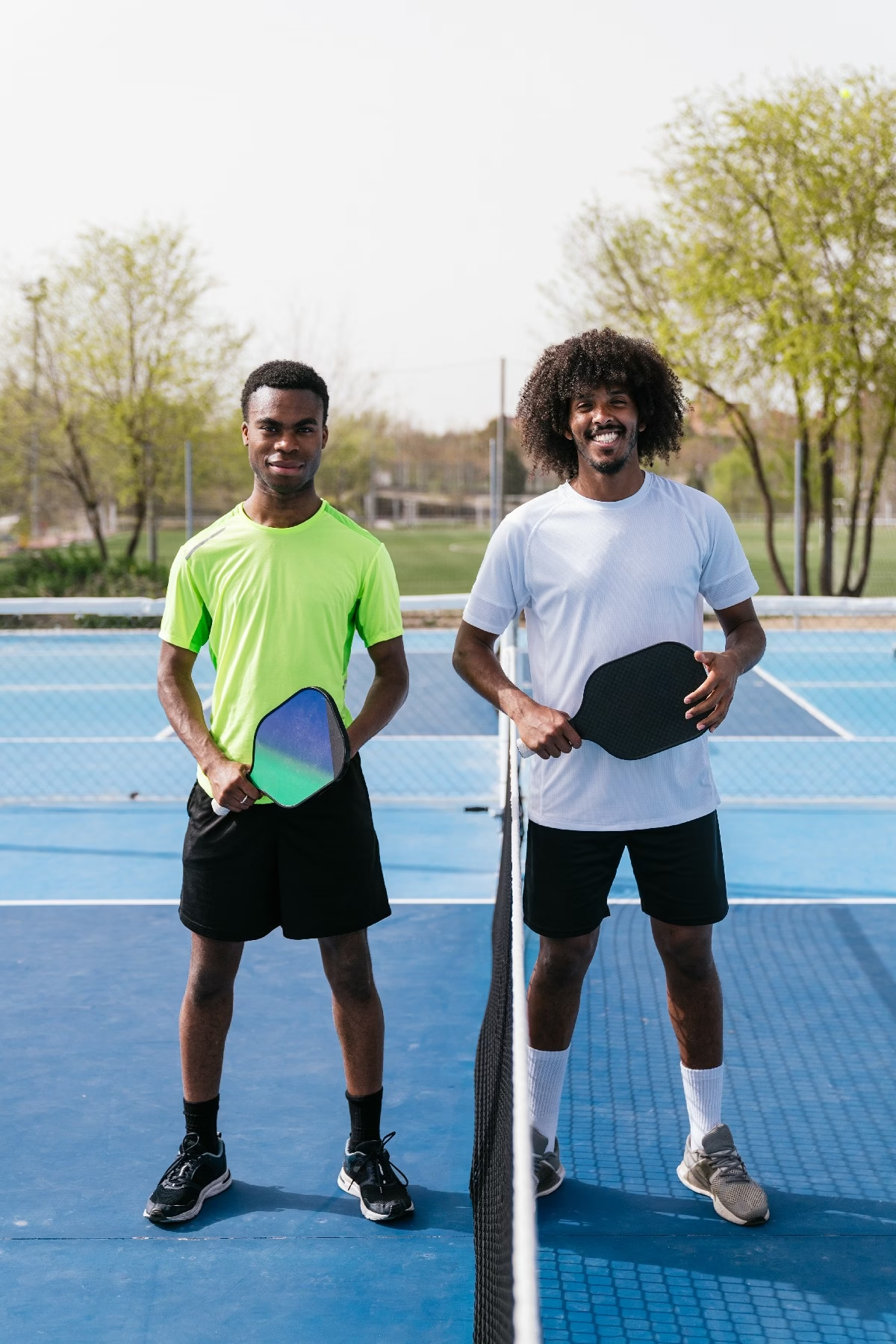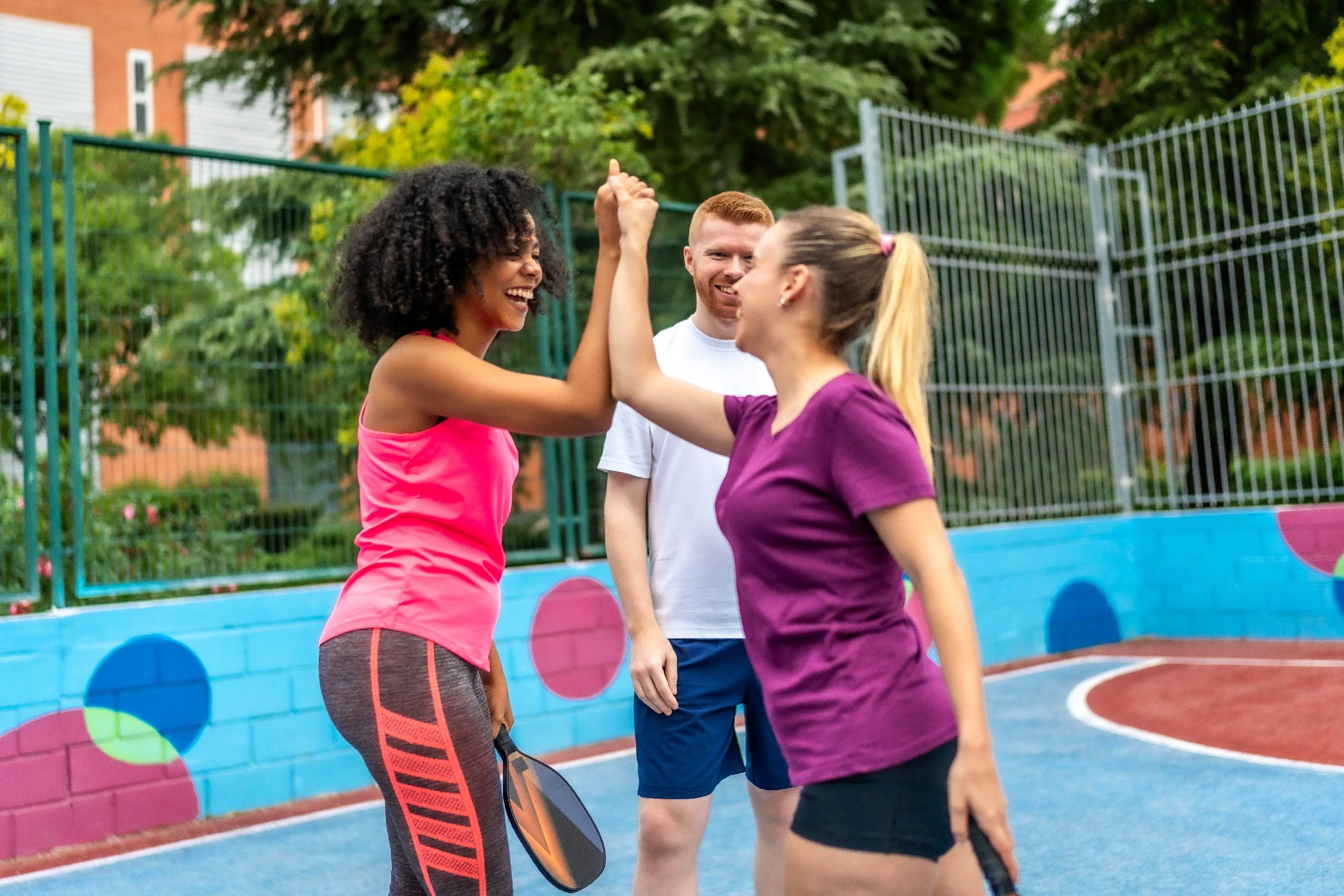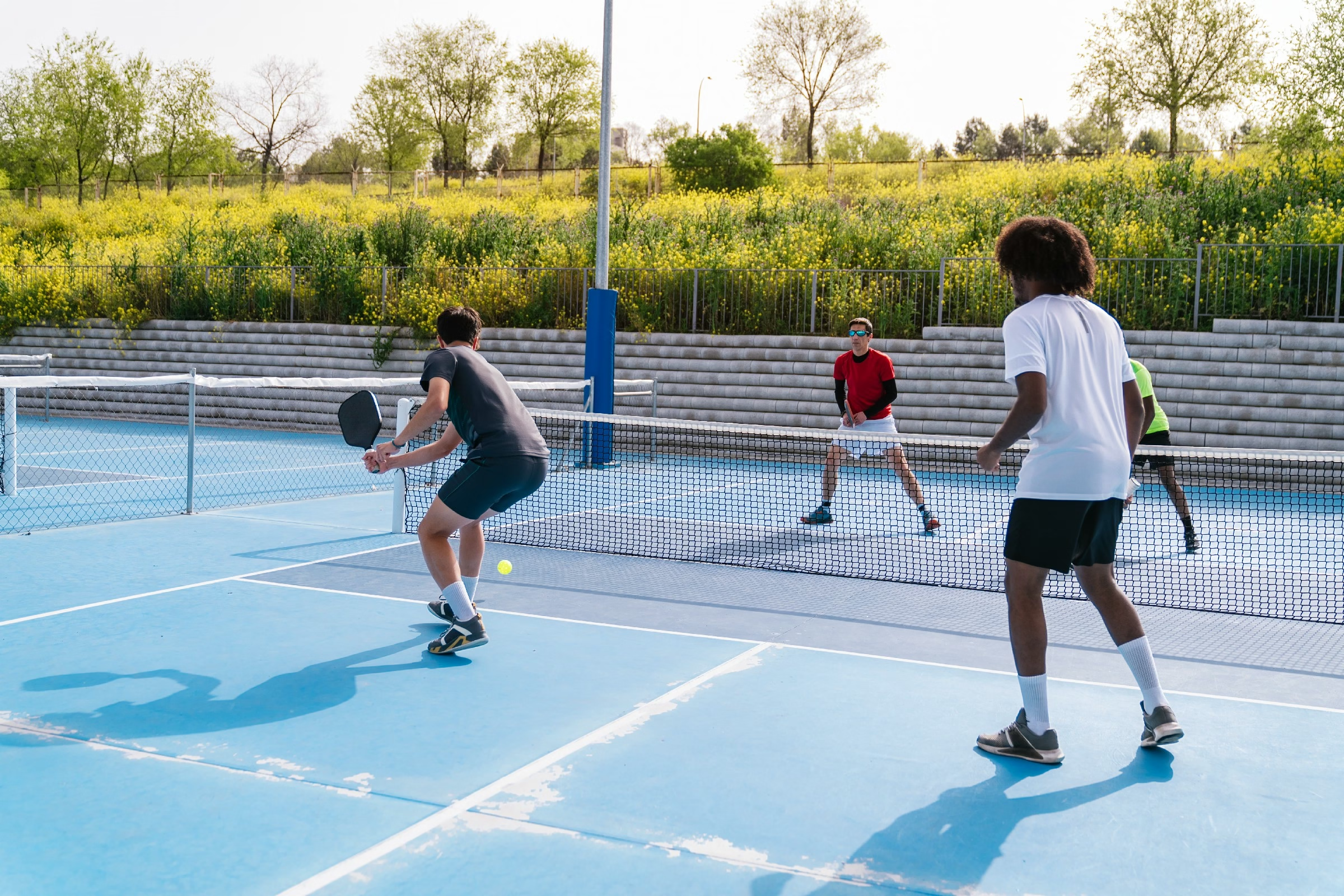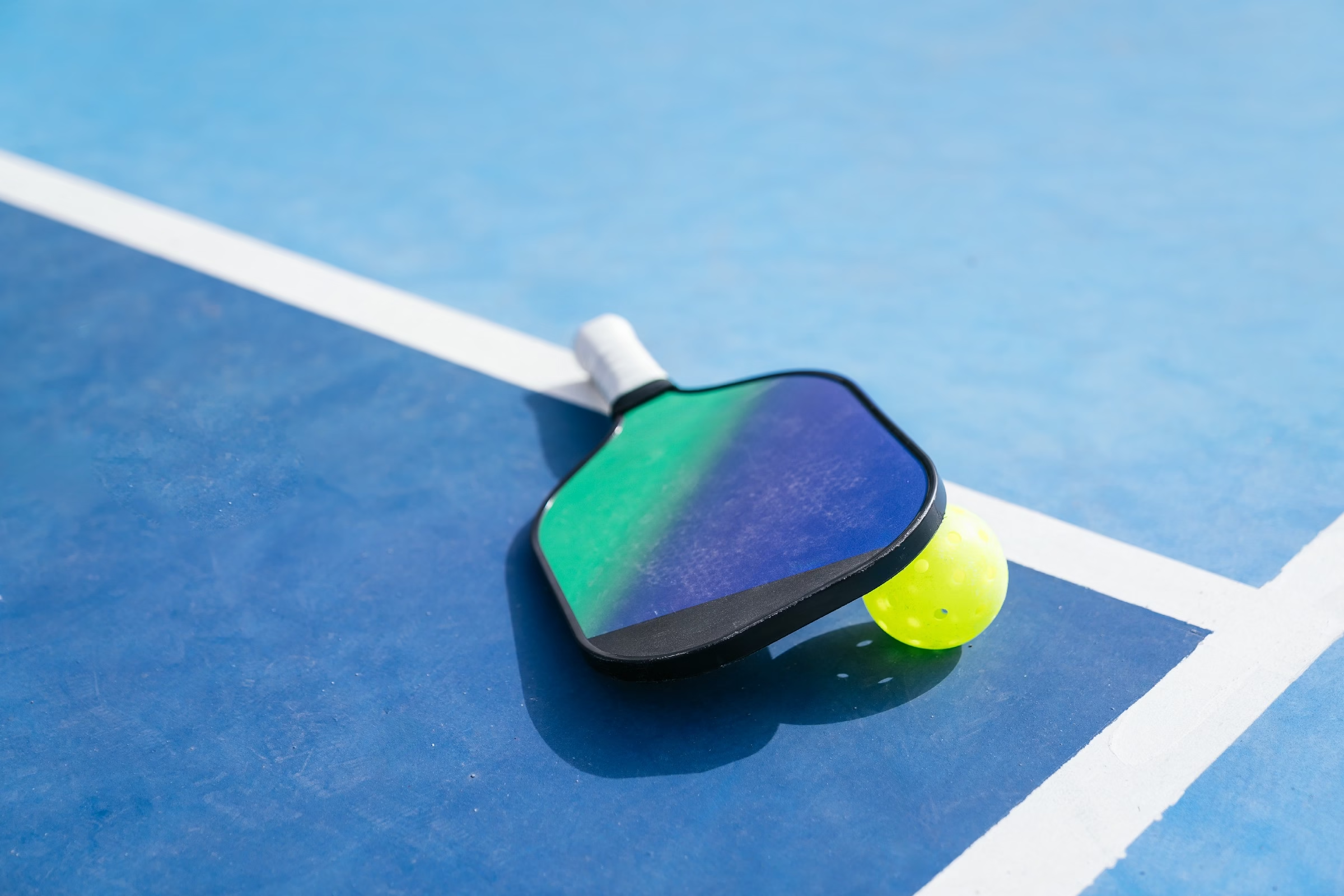Blog
how many calories do you burn while playing pickleball
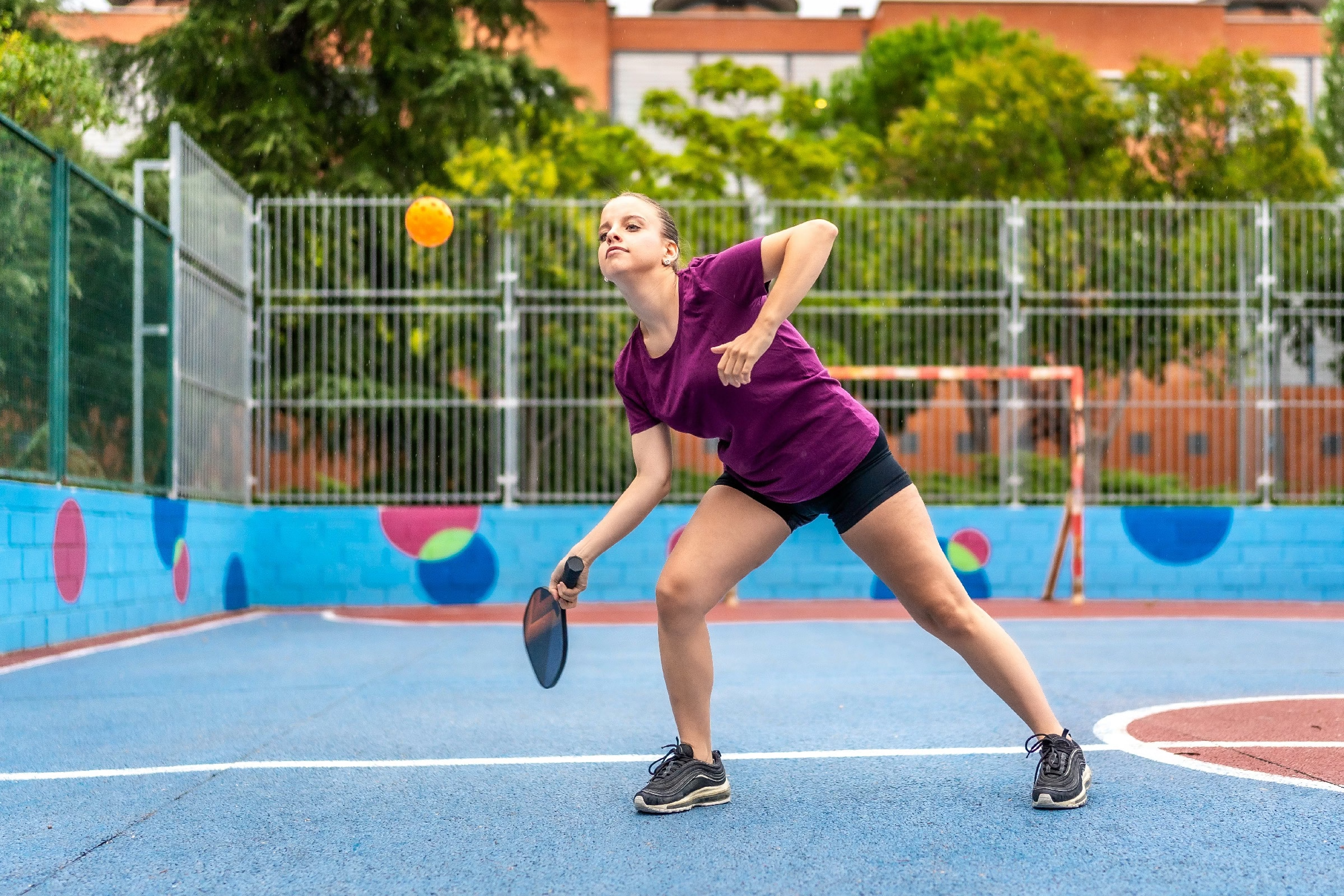
Discovering teh Caloric Count: How Many Calories Do You Burn While playing Pickleball?
In the vibrant realm of racquet sports, pickleball has rapidly emerged as a beloved pastime, captivating players of all ages with its unique blend of strategy, agility, and fun. As enthusiasts swap stories about their most exhilarating matches and perfect serves,a captivating question frequently enough arises: just how many calories are burned during a spirited game of pickleball? This article delves into the intriguing intersection of this engaging sport and calorie expenditure,offering insights into how this seemingly playful activity can also contribute to your fitness journey. Whether you’re a seasoned player or a curious newcomer, understanding the caloric dynamics of pickleball can empower you to make informed decisions about your health and wellness while enjoying one of the fastest-growing sports in the world.
Table of Contents
- Understanding the Caloric Burn: The physics of Pickleball
- Factors Influencing Caloric Expenditure in Pickleball
- Comparing Pickleball to Other Sports: Where Does It Stand?
- Maximizing Your Workout: Tips to Increase Caloric Burn
- Tracking Your Progress: Tools and Techniques for Monitoring Caloric Burn
- The Health Benefits Beyond Calories: Why Pickleball Matters
- Q&A
- Future Outlook
Understanding the Caloric Burn: The Physics of Pickleball
To grasp the caloric burn from pickleball,it’s essential to appreciate the interplay of multiple physical factors. Intensity of play, duration, and individual body composition shape the overall energy expenditure while on the court. Since pickleball involves both cardio and agility, the average player can expect to burn a significant number of calories, often comparable to more intense sports. the activity’s unique combination of speedy movements, strategic bursts of speed, and continuous engagement keeps the heart rate elevated, which is crucial for calorie burning.
Understanding caloric burn also involves knowing how to measure it accurately. Using MET values (Metabolic Equivalent of Task) provides a standardized method to assess the energy cost of various activities. For pickleball, the MET is estimated to be between 4 to 8, depending on whether players engage in recreational or competitive play. To illustrate this impact, consider the following table:
| Activity Level | MET Value | Calories Burned per 30 minutes (160 lbs) |
|---|---|---|
| Recreational Play | 4 | 120 |
| Competitive Play | 8 | 240 |
Another consideration is the variability in personal factors such as age, sex, fitness level, and muscle mass. These attributes can lead to fluctuations in how many calories each individual may burn during play. Additionally, attributes like hydration and recent food intake also influence performance and caloric burn rates. ultimately, the exhilarating pace of pickleball not only serves as an engaging pastime but also doubles as an effective calorie-burning exercise, making it attractive for fitness enthusiasts of all levels.
Factors Influencing Caloric Expenditure in Pickleball
Understanding the factors influencing caloric expenditure while playing pickleball can provide valuable insights into how much energy you burn during the game.Several key elements come into play, including your body weight, which directly impacts the number of calories you burn. Heavier individuals tend to expend more energy, as moving their body mass requires additional effort. This is notably significant during high-intensity matches that feature rapid movements and bursts of energy.
Another vital factor is the intensity of play. The pace at which you engage in a match can substantially alter your caloric burn. For instance, players can easily switch from a casual game to a highly competitive match, which incorporates swift lateral movements, quick sprints, and challenging rallies. The environment also plays a crucial role; playing outdoors in hot weather may increase your metabolic rate due to the need for your body to cool down, while playing indoors in a controlled environment may have a different impact on your energy expenditure.
Lastly, consider the duration and frequency of your games. Longer sessions typically result in higher total caloric burn.On average, a 155-pound player can burn approximately 400 calories in just an hour of moderate play, while that number can rise significantly with more vigorous activity. To illustrate these differences, the table below showcases approximate caloric burns based on weight and intensity:
| Weight (lbs) | Light Activity (calories/hour) | moderate Activity (calories/hour) | Vigorous Activity (calories/hour) |
|---|---|---|---|
| 125 | 240 | 300 | 420 |
| 155 | 298 | 370 | 500 |
| 185 | 355 | 440 | 580 |
Comparing Pickleball to Other Sports: Where Does It Stand?
To truly appreciate how pickleball fits into the broader landscape of sports, it’s essential to compare it with some of its more established counterparts. Pickleball combines elements of tennis, badminton, and ping-pong, providing a unique blend of agility, strategy, and social interaction. Unlike in sports like basketball or soccer,where the pace is constantly high with continuous running,pickleball allows for short bursts of energy with brief periods of rest,making it easier on the joints and ideal for players of all ages.
When comparing calorie burn, pickleball stands out in ways that might surprise many. The intensity of a pickleball match can vary widely based on a player’s skill level and play style. On average, a session of pickleball can burn between 400 to 600 calories per hour, comparable to playing a game of doubles tennis or engaging in vigorous cycling. By incorporating both upper body movements and footwork, players engage numerous muscle groups, promoting not only calorie expenditure but also overall fitness and muscle toning.
| Sport | Calories Burned per Hour |
|---|---|
| Pickleball | 400-600 |
| Basketball | 500-800 |
| Running | 600-1000 |
| Swimming | 400-700 |
| Cycling | 400-1000 |
What sets pickleball apart from more intense sports is its accessibility and inclusiveness. Many of the calories burned during gameplay stem from quick lateral movements and reflexes rather than sustained running, making it attractive to those who might feel intimidated by conventional workouts. The social environment cultivates friendships and community, further enhancing the exercise experience. Ultimately, whether your a seasoned athlete or a newcomer, pickleball offers both fitness benefits and enjoyment in a single, engaging package.
Maximizing Your workout: Tips to Increase Caloric Burn
To maximize your workout while playing pickleball,consider incorporating high-intensity intervals into your matches. This type of training alternates between periods of intense activity and lighter activity, significantly boosting your caloric burn. Such as, you could devote a minute to sprinting to the net after every serve, which elevates your heart rate and maximizes your energy expenditure. adding quick bursts of energy not only enhances your performance but also keeps the game exciting and engaging.
Another strategy to increase calories burned is to focus on your footwork. Good footwork not only improves your game but also requires you to engage more muscle groups. Take short, quick steps rather than longer strides to maintain agility and balance. This technique will keep your heart rate elevated and your muscles active throughout the match, leading to an increase in overall caloric output. Involve your entire body by maintaining a low center of gravity and staying light on your feet.
| Activity | Calories Burned (per hour) |
|---|---|
| Casual Pickleball | 400-500 |
| Competitive Pickleball | 600-800 |
| High-Intensity Drills | 700-900 |
don’t underestimate the power of proper hydration and nutrition.Staying hydrated helps to maintain optimal performance levels, allowing you to push harder for longer periods. Make sure to fuel your body with the right snacks before and after your games; carbohydrates for energy and protein for recovery are essential. Consider incorporating light snacks like bananas or energy bars during breaks to keep your energy levels stable. Correct nutrition, combined with your strategic playing, will help you reach your fitness and caloric burn goals more effectively.
Tracking Your Progress: Tools and Techniques for Monitoring Caloric burn
Monitoring your caloric burn during pickleball can be a game changer for anyone looking to optimize their fitness routine. Luckily,there are numerous tools available to help you track your progress effectively. Wearable fitness trackers, such as smartwatches or heart rate monitors, are among the most popular. These devices not only estimate calories burned but can also offer insights on heart rate and activity levels. Apps designed specifically for sports enthusiasts can also enhance your tracking experience by allowing you to log matches, durations, and even opponents’ stats.
don’t underestimate the power of traditional methods either.Keeping a simple fitness journal can provide a tangible way to assess your caloric expenditure. By documenting your playing time, intensity, and perceived exertion levels, you can gain a clearer picture of how many calories you’re burning. Additionally,using the MET (Metabolic Equivalent of Task) system can provide a quick reference for estimating calories burned while engaging in various matches or drills on the court.
| Activity | Calories Burned (per 30 min) |
|---|---|
| Casual Pickleball Game | 200 |
| Competitive Pickleball | 350 |
| Paddle Drills | 300 |
Lastly, combine various techniques for a more complete overview of your caloric burn. Consider using a combination of wearables, a fitness journal, and exercises metrics. This multi-faceted approach will enable you to set specific goals, adjust your training regimens, and ultimately enhance your performance on the court. Remember, the key to monitoring your progress is not just knowing the numbers, but understanding how they relate to your fitness journey and helping you stay motivated.
The health Benefits Beyond Calories: Why Pickleball Matters
While many focus solely on the calories burned during a vigorous game of pickleball, the health benefits extend far beyond mere numbers. Engaging in this paddle sport not only enhances physical fitness but also promotes mental well-being. As players deftly maneuver on the court, the combination of cardiovascular activity and coordination strengthens the heart and improves overall stamina.The rapid movements and strategic play foster flexibility and agility,making pickleball a delightful way to keep the body in prime condition.
Beyond physical improvements, pickleball has significant social advantages that contribute positively to health. the interactive nature of the game encourages players to connect and communicate, thus reducing feelings of loneliness and isolation. Being part of a community not only enhances motivation but also infuses a sense of belonging, which is a crucial aspect of mental health. Regular participation in pickleball leagues or casual games creates friendships and camaraderie, enriching players’ lives in ways that transcends physical fitness.
moreover, pickleball serves as a fantastic way to boost cognitive function. The sport involves quick decision-making and strategic thinking,helping players sharpen their mental acuity. As players anticipate their opponent’s moves and develop game plans, they stimulate their minds, promoting neural health. Research suggests that engaging in activities that combine physical exertion with strategy can decrease the risk of cognitive decline with age. Therefore, the appeal of pickleball not only lies in its caloric burn but its multifaceted benefits that enhance quality of life.
Q&A
Q&A: How Many Calories Do You Burn While Playing Pickleball?
Q1: What is pickleball, and why is it becoming so popular?
A: Pickleball is a fun and engaging racquet sport that combines elements of tennis, badminton, and table tennis. Its rise in popularity can be attributed to its accessibility for players of all ages and skill levels,and also its social aspect,making it a great way to connect with friends and stay active.
Q2: How intense is pickleball as a workout?
A: Pickleball can range from a leisurely game to a highly competitive match. the intensity largely depends on individual playing style and skill level. While it can be played at a low intensity,competitive games often involve quick movements,bursts of speed,and strategic play,offering a ample workout.
Q3: So,how many calories can I burn playing pickleball?
A: On average,a 150-pound person can burn between 400 to 600 calories per hour playing pickleball,depending on the intensity of the game. For those who weigh more, about 200 pounds, the calorie burn could reach up to 700 calories per hour. Smaller individuals may burn slightly fewer calories, but it remains an effective way to stay fit.
Q4: What factors influence the number of calories burned during a game?
A: Several factors play a role in calorie expenditure during pickleball, including:
- Body weight: Heavier individuals typically burn more calories.
- Game intensity: Competitive matches will burn more calories than recreational play.
- Duration of play: Longer games obviously contribute to a higher overall calorie burn.
- Fitness level: More agile players may engage in quicker, more dynamic movements, increasing calorie burn.
Q5: Is pickleball effective for weight loss and cardiovascular fitness?
A: Absolutely! Because of its moderate to high intensity and the number of calories burned, pickleball can be an effective component of a weight loss program. Additionally, it promotes cardiovascular fitness, improving heart health over time when played regularly.
Q6: Are there ways to maximize calorie burn while playing?
A: Yes! To maximize calorie burn,consider the following tips:
- Play with intensity: Opt for competitive matches where you’ll move more vigorously.
- Include variety: Change up your gameplay by trying doubles or singles matches that challenge your stamina.
- Add footwork drills: Enhance your skills off the court by incorporating agility drills, leading to better performance and increased calorie burn.
Q7: What other health benefits can pickleball provide besides burning calories?
A: Beyond calorie expenditure, pickleball offers numerous health benefits, including improved hand-eye coordination, enhanced flexibility, and increased social interactions. Playing regularly can also reduce stress and improve mental well-being, creating a holistic fitness experience.
Q8: Can anyone play pickleball to reap these benefits?
A: Absolutely! Pickleball is designed for players of all ages and skill levels. Whether you’re a senior looking for a gentle workout or a young athlete striving for competition, pickleball can cater to your needs while still providing an energizing exercise option.
Conclusion: So whether you’re in it for the fitness, the fun, or the friendship, pickleball offers a fantastic possibility to burn calories and improve health while enjoying quality time with others. Grab your paddle and hit the court!
Future outlook
the dance of pickleball not only offers a unique blend of strategy and sociability but also serves as a lively workout, contributing positively to your fitness journey. While the number of calories burned during a game can vary widely based on factors such as intensity, duration, and individual body composition, it’s clear that this engaging sport can indeed be a fun way to torch those calories. Whether you’re a seasoned player or a curious beginner, embracing pickleball might just be the perfect addition to your physical activity routine. So grab your paddle, invite a friend, and let the court become your new playground—where health and enjoyment inevitably align.


